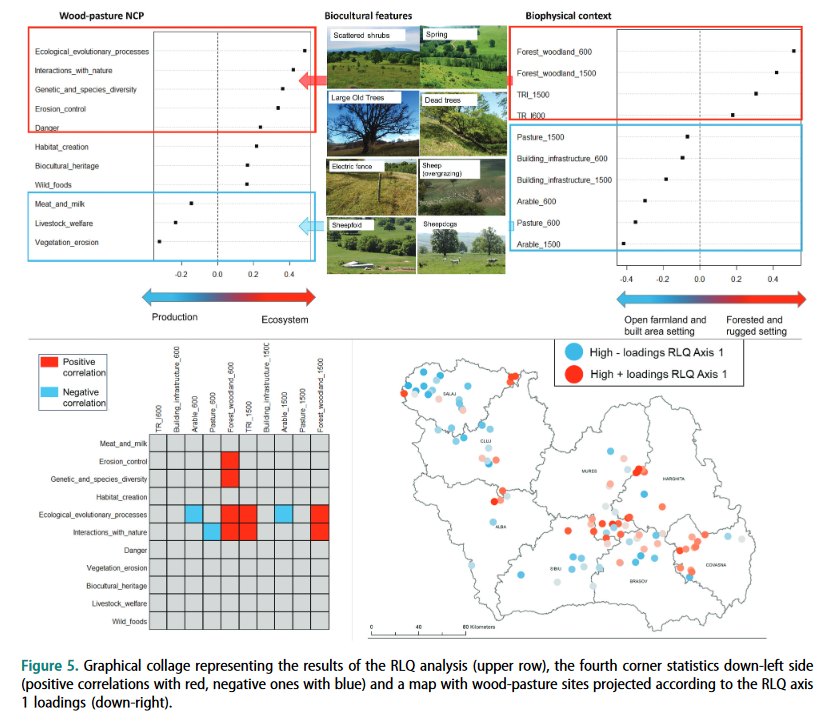Wood-pastures are very old, highly biodiverse and unique agricultural utilisation systems that were widespread throughout Europe for hundreds of years. In the course of agricultural intensification (inter alia merging of areas to suit farming machinery, removal of woody plants from farming areas, use of fertilisers and other chemicals), these cultures disappeared in almost all of Europe. In Romania, however, many wood-pastures have been preserved and are still traditionally cultivated. An invaluable cultural heritage for the whole of Europe. We can draw lessons for modern agroforestry systems from these wood-pastures. For this reason, the Institute for Applied Material Flow Management (Trier University of Applied Sciences), together with its partners in Romania, has carried out an analysis and various studies since 2022.
In the recently published study, the intricate biocultural values of ancient wood-pastures are explored, focusing on their social-ecological interactions and Nature’s Contributions to People (NCP). Using Transylvania, Romania, as a case study, it frames wood-pastures as biocultural systems shaped by centuries of traditional management. By employing social-ecological network analysis, RLQ, and fourth corner analysis, the research reveals how management practices, biophysical context, and NCP are interlinked.

The findings highlight the critical role of herders as stewards, maintaining both ecological and cultural integrity. Traditional practices, such as rotational grazing and communal stewardship, have preserved key natural features like scattered trees, large old trees, and high-nature-value grasslands. These elements act as hubs within the biocultural network, supporting biodiversity, ecosystem services, and cultural heritage. However, the study also underscores the decline of traditional herding due to socio-economic pressures, jeopardizing the sustainability of these systems.

The research reveals a gradient in NCP across the landscape. Rugged, forested terrains are associated with ecosystem-related NCP, such as biodiversity conservation and ecological processes, while flat, lowland areas emphasize provisioning NCP like livestock production. However, this latter trend often comes at the cost of vegetation degradation and biodiversity loss.

Implications for science and policy are important. The study demonstrates the value of innovative methodologies like network analysis and RLQ in understanding complex biocultural systems. It advocates for integrating socio-economic and cultural dimensions into future research to capture the full spectrum of biocultural contributions.
From a policy perspective, the study calls for preserving traditional management practices and prioritizing wood-pastures for conservation under the EU Biodiversity Strategy for 2030. Tailored approaches are necessary to address overgrazing in accessible areas and abandonment in remote landscapes. Balancing traditional and modern management strategies is key to sustaining these invaluable cultural landscapes.
Link to the paper: Understanding nature’s contributions to people in ancient biocultural systems through network and RLQ analysis
Link to the project-homepage: https://transylvanian-wood-pastures.eu/
